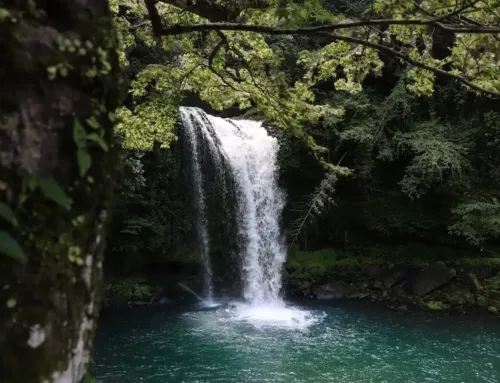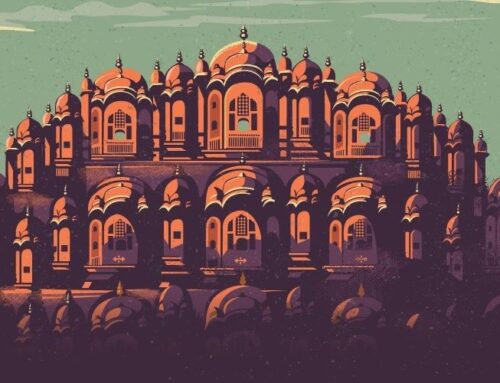Close to Delhi NCR & surrounded between Aravali hills lies a city that is almost 300 years old, has massive forts, stunning palaces (some of them are hotels now), and just eye catching colourful streets full of tourists. And all of this is a simple explanation of sightseeing in Jaipur.
Even street, fort, palace & bazaar of Jaipur has its own story, fact & even myths which makes it more unique, and to understand the truth behind them, we have shared 10 Facts about Jaipur, that will make you fell in love with Jaipur, and visit the beautiful pink city.
1. You can’t get lost in Jaipur
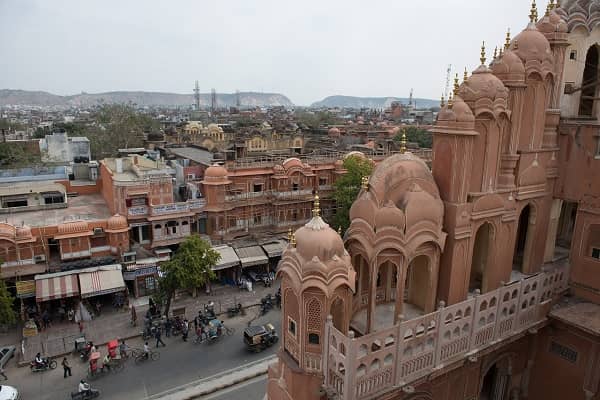
The whole Jaipur city was surrounded by a 6 & 3 meter (height & width) wall with eight gates in all four directions. Now, this is the Pink City area of Jaipur (Old Jaipur) I am talking about. So anyone who wants to enter or exit from Jaipur city has to pass through these gates.
And inside the city, the construction was planned in a unique way of a 3×3 grid system which made it very easy for locals to travel across Jaipur, as all the small lanes of Jaipur would end up on the main road. Making is almost impossible to get lost in Jaipur.
2. Jaipur is blessed against natural & man made calamity
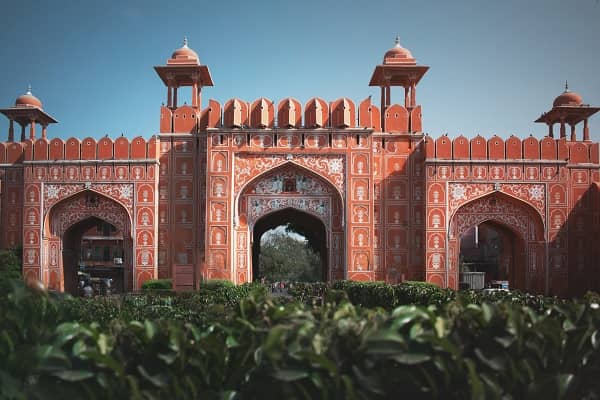
As I mentioned above, that Jaipur city has a total of 8 gates, which are 1. Jorawar Singh Gate, 2. Surajpole Gate, 3. Sanganeri Gate, 4. New Gate, 5. Ajmeri Gate, 6. Chandpole Gate, 7. Ghat Gate and 8. Samrat Gate. And it is believed that these gates protect Jaipur from invaders and even natural calamities. There is a saying in Jaipur, which is:
“Amer ki Sheela Devi, Chandpol Ka Hanuman. Sanganer ka Sanga Baba, Jeet Laya Raja Maan.”
What this line means, I will tell that a bit below, but before that, you should know that one of Maharaja of Jaipur, Raja Maan Singh, who was also a famous Polo player, had set up temples of Sheela Devi, Hanuman & Sanga Baba (a saint) in three corners of Jaipur (west, south, and north). Since then, many incidents have happened, which made the local belief stronger that Jaipur is blessed against natural & un-natural calamity.
Whether it was the flood of 1981 or the terror attack of 2008, nothing happened in Jaipur. A total of 26 bombs got recovered near Chandpol Gate and nine more near Sanganeri Gate. A total of 35 bombs planted by terror groups didn’t go off, saving the lives of 100s of innocent people.
So the saying above means that “Goddess Sheela of Amer, Lord Hanuman at Chandpol, the Sanga Saint at Sanganer, have blessed Maharaja Maan Singh”
3. Jaipur has a Maharaja who is also a Polo player
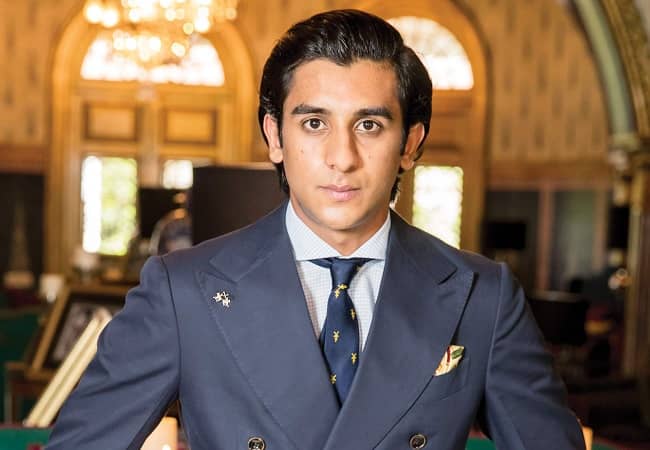
Did you know Jaipur still has a Maharaja? His name is Padmanabh Singh, and he was crowned Maharaja of Jaipur at a tender young age of 13. You will not find him win battles anymore, but instead, you will find him grace the cover of a fashion magazine, or on Instagram, striking an elegant pose in the royal interiors of Jaipur City Palace.
He plays Polo, and it is not surprising that he excels in it, because it runs in his blood!!! Polo was a sport that almost all Maharajas of Jaipur played, and it’s therefore not surprising that young Padmanabh Singh picked up this sport from a young age. He has even represented India in international Polo championships, and is a member of the Guards Polo Club in England.
Padmanabh Singh is the eldest son of Diya Kumari, the daughter of Jaipur’s last ruling Maharaja, Sawai Bhawani Singh. He lives with the royal family in Jaipur City Palace, and recently he placed a luxurious suite on AirBnB. He studies Liberal Arts in New York University, and he frequently visits Jaipur where he now stays in Suján Rajmahal Palace.
4. $50,000 hotel room in Jaipur
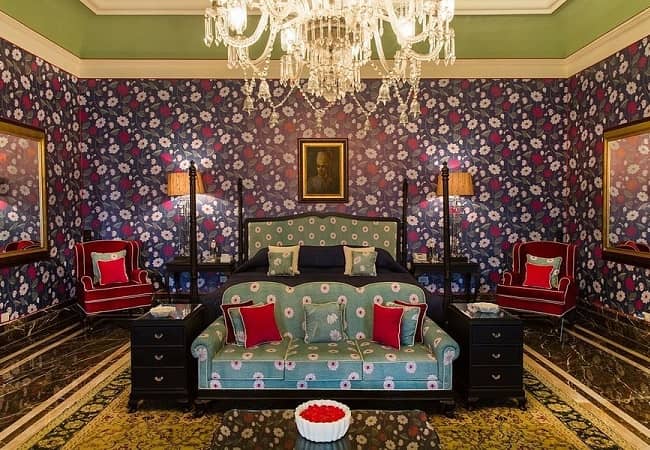
If you are searching for the most expensive hotel stay in the world, than it’s in Jaipur. The Raj Mahal Palace hotel in Amer Jaipur has a Suite room (presidential suite) with a room tariff of $50,000 per night.
The Presidential Suite is among the biggest suites in the whole of Asia. There are 4 floors of lavish luxury, and even the furniture here is made of gold and silver. Right from the entrance of this Presidential Suite to the roof top terrace, everywhere you will be surrounded by the highest quality luxury imaginable.
Bedrooms, dining rooms, private chambers, lounge seating, all have the most luxurious furnishings you can think of. Walls painted with gold leaf, vintage chandeliers, lawns, private staircase, colored mirrorwork, art deco swimming pools, Jacuzzi, luxurious bathrooms, library, home theatre, dining room, are just some of the many things that will entice you to stay in the Presidential Suite of Raj Mahal Palace.
5. Its Jaipur, not Chandigarh.
Rome was not built in a day, but Jaipur was constructed in 4 years.
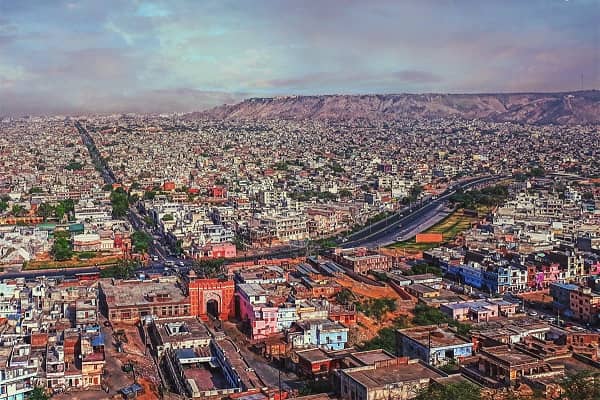
Another startling fact about Jaipur you might now have known is that Jaipur, not Chandigarh, is the first planned city of India. Jaipur was founded in 1730 by Sawai Jai Singh II, whereas Chandigarh was built much later in the 20th century. Jai Singh II consulted many scholars of those times, and took the help of leading architects in planning a new capital city close to Amer.
Finally, in the year 1726, construction started on developing Jaipur. It took four years to build this spectacular city. Jaipur was developed with meticulous planning and precise architectural layout designs. Vidyadhar Bhattacharya offered his architectural expertise in developing Jaipur, and the planning was done according to laws of ancient Indian sciences of Vastu Shastra and Shilpa Shastra.
Jaipur was fully developed city at those times, and it can be said that it was built as the first planned city of India.
6. Prince of Wales, gave Jaipur its 2nd name “Pink City”
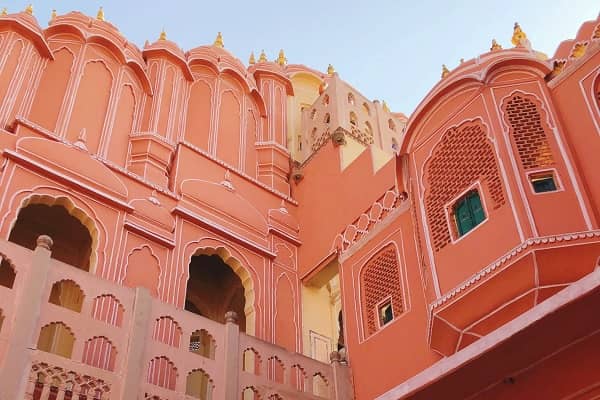
The color Pink is so closely associated with Jaipur that the moment you think of Pink color, Jaipur immediately comes to your mind. But why pink color and not some other color? This question puzzles many tourists who visit Jaipur, but they are not aware of the history of this Pink color. So we will reveal to you why Jaipur is called as Pink City of India.
In 1876 Prince of Wales and Queen Victoria came to visit Jaipur. Maharaja Ram Singh, who ruled Jaipur during those times, decided to welcome their guests in the most unimaginable ways possible, and that is by coloring every building in Jaipur with Pink color. Moreover, Pink color is the color of hospitality and vibrancy, so it creates a romantic image of Jaipur in the minds of travellers.
Another reason why Jaipur is called as the Pink City is that pink terracotta stone was used in most buildings and monuments in Jaipur. Residents of Jaipur are now so fond of this pink color, that they follow this age old tradition of painting their houses with pink and it has also become a law that every person of Jaipur is aware of.
7. Jaipur hosts world’s largest literary festival, free & every year
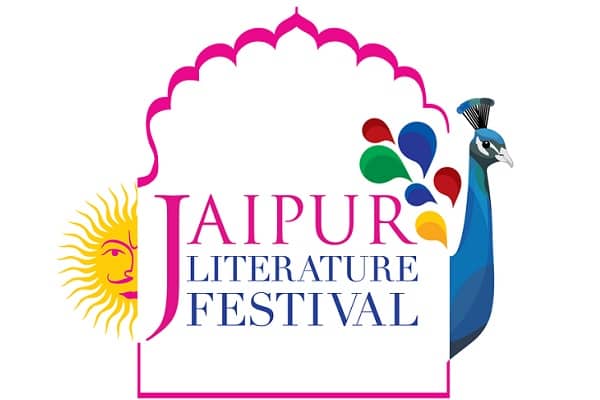
Ever since the first literary festival was held in Jaipur back in 2006, the fame and glamour of Jaipur Literature Festival has skyrocketed and reached new heights. It has not only made Jaipur among the most famous cities of the world, but artists from all fields of art come to Jaipur during Jaipur Literature Festival.
Jaipur Literature Festival is the largest free literary festivals of the world. It attracts not only novelists, poets, and literary giants from the world over, but every artist on the globe comes to Jaipur to participate and interact with other artists. Debates, ideas, discussions, music, books, art, dance…. Jaipur comes alive during this one of a kind event.
Jaipur Literature Festival is held during the January/February every year, and this festival is also gives opportunity to explore Jaipur and see all its tourist landmarks.
8. Jaipur has the biggest Circular Park In Asia
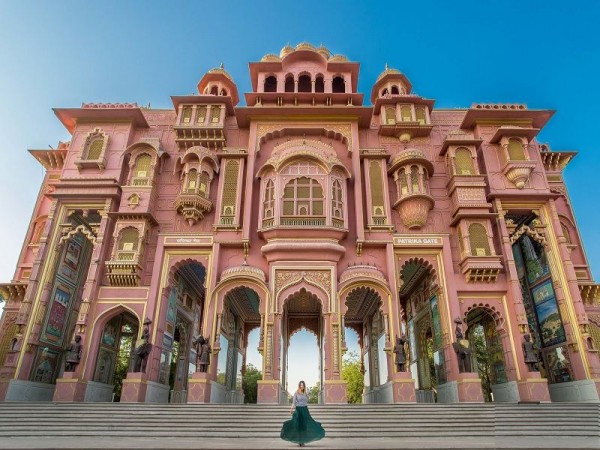
Jaipur has many amazing facts about it, and one such fact is that it has the largest circular park in Asia. The diameter of Jawahar Circle is 452 m, and its circumference is 1420 m. Jawahar Circle was developed by Jaipur Development Authority (JDA), as a highway traffic circle in Jaipur. The main attraction of Jawahar Circle is Patrika Gate, which seems just like a replica of another famous Jaipur monument, the Hawa Mahal.
Jawahar Circle has many concentric pathways on which people can walk and enjoy eye-pleasing views of the greenery and natural surroundings. Manicured rose gardens, lawns, trees and flowering shrubs in the park offer a natural beauty to Jawahar Circle, and make it one of the greenest of spaces of Jaipur.
There is a musical fountain in the park, and every evening at 7 pm evening, a musical fountain show entertains people with its multicolour light displays and dancing fountains. A food court present in this beautiful park offers snacks and street foods.
9. Only Jaipur is home to 3 forts, and more than 5 palaces
In Rajasthan you can find forts in almost all major cities. But only in Jaipur, there are not one but three gigantic forts. These are Amber Fort, Jaigarh Fort, and Nahargarh Fort. All of these are the major landmarks of Jaipur city.
Also Jaipur is the only city where there are 5 palaces and they are Jaipur City Palace, Rambagh Palace (Taj Rambagh Palace Hotel), Samode Haveli. Within 50 km of Jaipur, there are even more palaces such as Chomu Palace, Shahpura Palace and Samode Palace.
10. A treasure hunt was launched by Indian Government in Jaipur
Jaigarh Fort is one of the top tourist attractions of Jaipur, and this fort has long walls that were built on hills. In those times, kings used to hide royal treasures in secret locations inside Jaigarh Fort, but till today nobody could unearth these treasures, and this makes Jaigarh Fort even more mysterious than other forts of Jaipur.
During the Emergency, the former Prime Minster of India, Indira Gandhi even made a desperate search attempt to discover the treasures inside Jaigarh Fort. Nobody knows the outcome of this search, but it definitely makes Jaigarh Fort, one of the top forts of Jaipur.
11. Jaipur has a monkey temple
Jaipur has many famous temples, but one of these temples is famous due to its monkeys, and this temple is called Galtaji Monkey Temple. Galtaji is actually a temple situated 10 km from Jaipur, and this temple has a very picturesque location.
The temple is built in forested and hilly region, and a water spring flows from the top of the hill and collects in seven pools around the temple. It makes the entire temple very calm, peaceful and relaxing tourist spot. Langurs and Rhesus monkeys can be seen in this temple, and tourists can see them at all times. Some even dare to swim in the water pools. This makes Galtaji Temple known as the Monkey temple.
12. If Surat is the biggest market of Diamonds, then Jaipur is for Emerald
Jaipur has remained a big center of gemstone industry since ancient times. Kings of Jaipur greatly used emeralds and other gemstones in their attires, thrones, and encouraged artisan and skilled jewellers in their kingdom.
Even today, Jaipur is known as a hub of gemstone manufacturing, trading, cutting and jewelry. You will find ornaments, jewelry, made of gemstones in many places in Jaipur. So if Surat is famous for its diamond industry, then Jaipur is known for its gemstone industry.
13. Jaipur has a real Egyptian Mummy
There are only 6 Egyptian mummies that you can see in museums across India, and one of them is in the Albert Hall Museum in Jaipur. This mummy is of a teenage girl called Tutu, and it is 2300 years old Egyptian mummy.
Albert Hall Museum, where this mummy is one of the many exhibits that you can visit, is a spectacular architectural building of Jaipur. At night the whole buildings is lighted in colored lights, making it a awesome sight. During the day, you can visit the museum inside and see age old pottery, armoury, paintings, sculptures, jewelry, woodwork, etc.
14. Jaipur is home to block print textiles
Handmade block printing in Jaipur is a centuries old craft that you can find only in Jaipur. Skilled artisans have carried on this craft of printing symbols, floral patterns on sarees with wooden blocks since ages, and even today you will find these craftsmen exhibiting their skill in Jaipur.
This block printing is famous for Sanganeri prints, Bagru prints, Dabu prints. The special thing about this block printing is that they use natural colors in this process.
15. Hawa Mahal, a unique tower palace
Hawa Mahal is like an icon of Jaipur, and this is the most amazing palace in Jaipur. Hawa Mahal means the Palace of Winds, and if you see Hawa Mahal from the outside, you will see tiny windows.
These windows are 953 in number and they allow winds to blow inside the palace and keep it cool. The windows also allowed royal women to see weddings, processions and daily life from their seats beside these windows. The unique constriction of Hawa Mahal makes it one of the most interesting monuments to visit in Jaipur.
16. Two mirror palaces of Jaipur
Jaipur has not one but two mirror palaces. The original mirror palace is in Amber Fort and there is also a new one which was created in Jaipur Wax Museum.
The original mirror palace is also called Sheesh Mahal, and it was here that the famous Hindi song of Mughal-e-Azam was shot on actress Madhubala. The Sheesh Mahal is a magnificent palace, where precious stones and crystals were used in its construction. This path breaking architecture of those days was such that if you would light a candle its reflection on the glasses in the ceiling created uncountable reflections, and illuminated the entire palace.
In Jaipur Wax Museum in Nahargarh Fort, the Sheesh Mahal uses over a million pieces of mirror to create breathtaking sight.
17. Jaipur has the biggest cannon on wheels
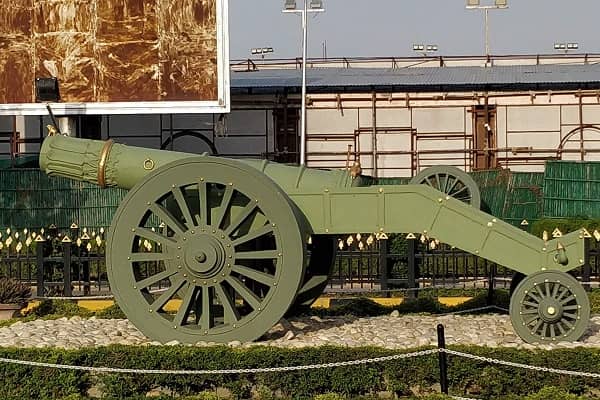
In its time, Jaiwana was the world’s heaviest and biggest cannon on wheels. That was way back in 1720 when Jaiwana cannon were made in Jaigarh Fort. The strangest thing about Jaiwana Cannon was that it was never used in a battle, and was only tested once in its entire lifetime.
Even strange are the tales that are woven round this massive cannon. And according to some of them, the cannonball which was fired from Jaiwana Cannon resulted in the formation of a pond in Chaksu village. There are even rumours that such was the noise from this cannon that many women had miscarriages on hearing its terrible boom.

